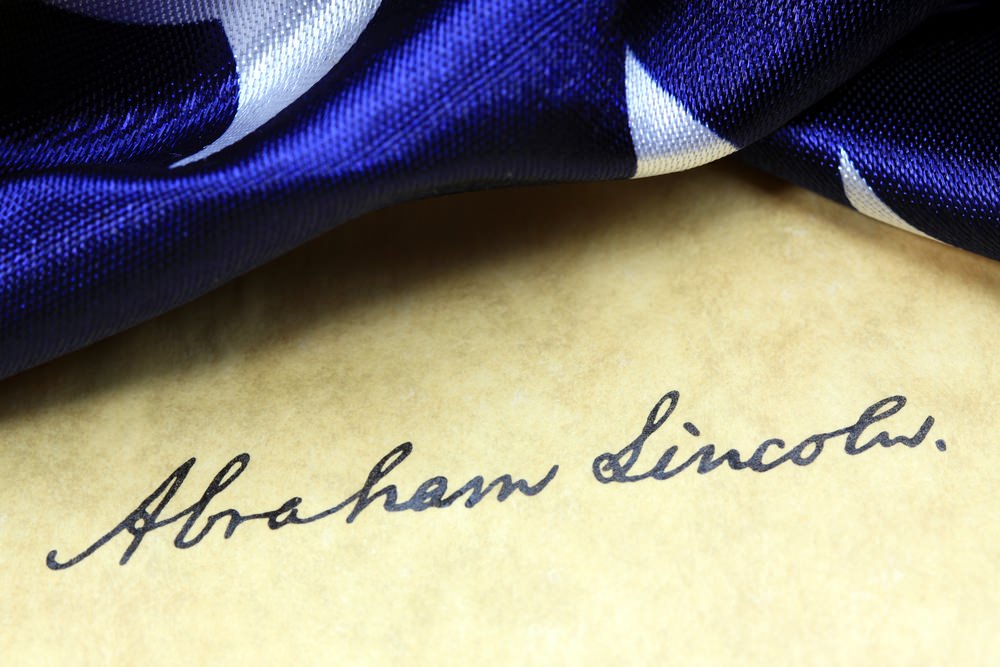This new exhibition, which opened on January 23 at the Morgan Library & Museum, focuses on Abraham Lincoln’s mastery of language and how his words changed the course of history. Today, nearly 150 years after the end of the Civil War, he remains an exemplar of exalted leadership in a time of great crisis and people the world over continue to look to him as a standard-bearer for principled governance. Lincoln Speaks explores Lincoln as a writer and public speaker whose eloquence shaped the nation and the world, in his time and in ours.
Organized in conjunction with scholars at the Gilder Lehrman Institute and drawing heavily on its renowned collection of American historical documents, the exhibition is presented thematically and chronologically. With additional contributions from the Shapell Foundation, Harvard College Library, the Library of Congress, and the Morgan’s collection of Lincoln manuscripts and letters, it includes photographic portraits and books owned and used by Lincoln, and highlights the range of his rhetorical powers, from the elevated language of his proclamations and great speeches to his forceful, incisive military memos and the intimate prose of personal letters to family and friends. Lincoln drew upon his powers as a writer and orator to sustain the country during its greatest crisis and to inspire Americans to embrace the ultimate purpose of the Civil War: the end of slavery. The show coincides with the 150th anniversary of the end of the Civil War and Lincoln’s assassination, and assesses the scale of Lincoln’s achievement, and his national and global legacy, through the power of his words.
In 1924 J. P. Morgan, Jr. gave his father’s extraordinary library to the public. The most influential financier in this country’s history, Pierpont Morgan was also a voracious collector. He bought on an astonishing scale, collecting art objects in virtually every medium, including the rare books, manuscripts, drawings, prints, and ancient artifacts that are the core of The Morgan Library & Museum’s holdings.
Mr. Morgan’s library, as it was known in his lifetime, was built between 1902 and 1906 adjacent to his New York residence at Madison Avenue and 36th Street. Designed by Charles McKim of the architectural firm McKim, Mead & White, the library was intended as something more than a repository of rare materials. Majestic in appearance yet intimate in scale, the structure was to reflect the nature and stature of its holdings. The result was an Italian Renaissance-style palazzo with three magnificent rooms epitomizing America’s Age of Elegance. Completed three years before McKim’s death, it is considered by many to be his masterpiece. In 1924, eleven years after Pierpont Morgan’s death, his son, J. P. Morgan, Jr. (1867–1943), known as Jack, realized that the library had become too important to remain in private hands. In what constituted one of the most momentous cultural gifts in U.S. history, he fulfilled his father’s dream of making the library and its treasures available to scholars and the public alike by transforming it into a public institution. Over the years—through purchases and generous gifts—The Morgan Library & Museum has continued to acquire rare materials as well as important music manuscripts, early children’s books, Americana, and materials from the twentieth century. Without losing its decidedly domestic feeling, the Morgan also has expanded its physical space considerably.
The mission of The Morgan Library & Museum is to preserve, build, study, present, and interpret a collection of extraordinary quality, in order to stimulate enjoyment, excite the imagination, advance learning, and nurture creativity.

